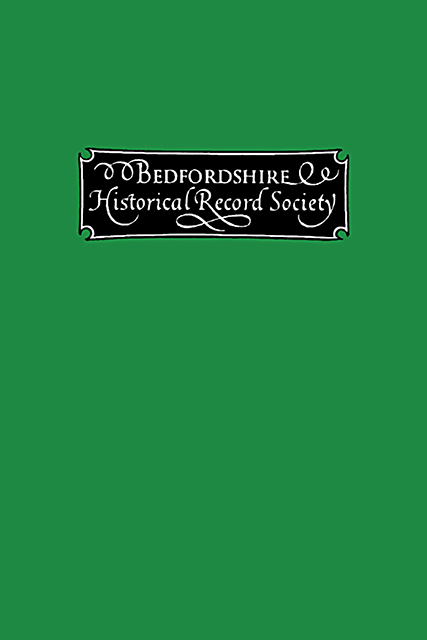Book contents
- Frontmatter
- Contents
- Abbreviations and Symbols
- A Bedford Fragment and the Burning of two Fraticelli at Avignon in 1354
- John Lord Wenlock of Someries
- The Tower of London Letter-Book of Sir Lewis Dyve, 1646-47
- Inventory of Furniture at Houghton House, c. 1726-28
- Index of Persons and Places
- Index of Subjects
- Miscellaneous Endmatter
The Tower of London Letter-Book of Sir Lewis Dyve, 1646-47
Published online by Cambridge University Press: 14 July 2023
- Frontmatter
- Contents
- Abbreviations and Symbols
- A Bedford Fragment and the Burning of two Fraticelli at Avignon in 1354
- John Lord Wenlock of Someries
- The Tower of London Letter-Book of Sir Lewis Dyve, 1646-47
- Inventory of Furniture at Houghton House, c. 1726-28
- Index of Persons and Places
- Index of Subjects
- Miscellaneous Endmatter
Summary
INTRODUCTION
From the Memoirs of Sir John Berkeley it was clear that the Leveller, John Lilburne, and the royalist, Sir Lewis Dyve of Bromham, Beds., conversed together when both were prisoners in the Tower of London in 1647, but it was not known how important these conversations were. In September 1956 in the bookshop of A. S. Banwell & Sons in Wimborne, Dorset, my friend Lt.-Col. Peter Young, D.S.O., M.C. (an authority on the army of Charles I in the Civil Wars), was shown a seventeenth-century manuscript book and, recognizing it as a letter-book kept by Dyve in the Tower of London, he bought it. On examination, the letter-book was found to contain contemporary copies of 34 hitherto unknown letters of Dyve to Charles I and seven to John Ashburnham.
The letters fall into three groups : First, those written to the king in the period when he was at Newcastle and at Holmby House : secondly, letters written during the period when the king was with the army and stayed at Newmarket, Hatfield, Caversham, Latimers, Woburn, Stoke and Oatlands; lastly, there are letters written when the king was at Hampton Court. The first group includes no letters to John Ashburnham (who did not rejoin the king until late July 1647) : the second and third groups include letters to Ashburnham.
An analysis of the letter-book shows that Dyve was particularly active as a correspondent in the summer of 1647, a time when the king’s affairs were at a critical stage and he was seeking allies in many quarters. Contemporary narratives such as those of Berkeley, Ashburnham, Herbert and Firebrace, and later works such as Gardiner, History of the Great Civil War and Abbott, Writings and Speeches of Oliver Cromwell, contain no mention of Dyve and his activities. Even M. A. Gibb’s well documented work on John Lilburne gives no hint of the relationship of Dyve and Lilburne. The accuracy of Dyve’s information on national events and on the relationship of army, king and parliament can easily be checked, however, by reference to the Calendars, of State Papers, Domestic, the Journals of the Houses of Lords and Commons, contemporary newspapers and pamphlets in the Thomason Collection in the British Museum, and the Clarke Papers.
- Type
- Chapter
- Information
- Publisher: Boydell & BrewerFirst published in: 2023



